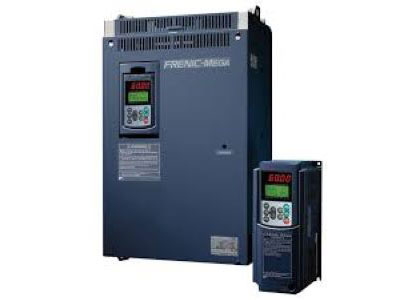Key Takeaway
DC is used in VFDs to control AC motors because most industrial power systems operate on AC, either 3-phase or 1-phase. VFDs need to adjust the frequency of AC voltage to vary motor speed. They achieve this by first converting AC to DC using rectifiers. This DC voltage is then converted back to AC with variable voltage and frequency, enabling precise control over motor speed. Essentially, DC serves as an intermediate stage in the conversion process, facilitating the efficient regulation of AC motor speeds in industrial applications.
Understanding DC Components in VFDs
When discussing Variable Frequency Drives (VFDs), it’s essential to understand the role of Direct Current (DC) components. VFDs are primarily used to control the speed and torque of electric motors, which are vital in industrial applications. The conversion process within a VFD starts with an AC input being rectified to DC. This DC is then modulated back to an AC output with a variable frequency, which the motor can use. The DC link or bus within a VFD serves as an intermediate step, ensuring smooth conversion and efficient motor control. This process helps in reducing energy consumption and enhancing the performance of the motor.

Role of DC Bus in VFD Operation
The DC bus is a crucial component in the operation of a Variable Frequency Drive (VFD). It serves as an energy reservoir, stabilizing the voltage and providing a constant supply of DC power to the inverter. This stability is crucial for precise motor control. Without a stable DC bus, the AC output could fluctuate, leading to inconsistent motor performance and potential damage.
In addition, the DC bus allows for the storage of regenerative energy, which can be reused, enhancing the VFD’s efficiency. When a motor slows down, it generates energy that is fed back into the VFD. The DC bus captures this energy, stores it, and makes it available for future use. This not only improves efficiency but also reduces energy consumption.
The DC bus also helps to filter out voltage spikes and dips, protecting the VFD and motor from electrical disturbances. By maintaining a stable and consistent DC voltage, the DC bus ensures that the VFD can deliver reliable performance even in challenging conditions.
You May Like to Read
Benefits of Using DC in VFDs
Using DC in Variable Frequency Drives (VFDs) offers several key benefits that significantly enhance performance and efficiency. First, converting AC to DC reduces harmonic distortion, which improves the power supply quality. This is crucial for maintaining a stable and reliable system.
Next, the DC bus in VFDs allows for precise control over the frequency and voltage supplied to the motor. This precision leads to smoother motor operation and reduces mechanical stress, prolonging the motor’s lifespan.
Additionally, DC enables regenerative braking. This feature allows the energy generated during braking to be fed back into the system, thereby reducing overall energy consumption.
These advantages result in lower operating costs, improved motor longevity, and enhanced system reliability. Understanding these benefits helps engineers appreciate the value of DC in VFDs, making them a smart choice for various industrial applications. By leveraging these benefits, businesses can optimize their operations, ensuring efficiency and cost-effectiveness.
Common Applications of DC in VFDs
DC usage in VFDs spans a wide range of industrial applications, making it vital for various sectors. In manufacturing, VFDs control conveyor belts, pumps, and fans, ensuring precise speed regulation and enhanced efficiency. This allows for smooth operation and reduced energy consumption. In the HVAC industry, VFDs regulate the speed of compressors and fans, contributing to significant energy savings and improved climate control.
In the renewable energy sector, VFDs are crucial for managing the speed of wind turbines. By optimizing rotational speed, VFDs maximize power generation and ensure consistent performance. The ability to precisely control motor speed and torque makes VFDs indispensable in these applications.
Efficiency, reliability, and performance are paramount in these industries, and VFDs provide the necessary control to achieve these goals. For new engineers, understanding these applications highlights the versatility and importance of VFDs in modern industrial operations. As technology advances, the role of VFDs will continue to expand, offering even greater opportunities for efficiency and innovation in various sectors.
Technical Explanation of DC Usage in VFDs
In a Variable Frequency Drive (VFD), DC usage is crucial for converting and controlling power efficiently. Initially, AC power from the mains is converted to DC. This is done using a diode bridge or a controlled rectifier. Once converted, the DC power is stored in the DC bus. Here, capacitors play a key role in smoothing out any voltage fluctuations, ensuring stable DC power.
Next, the VFD’s inverter section takes this stable DC power and converts it back to AC. This conversion uses pulse-width modulation (PWM). PWM is a technique that allows precise control of the AC output’s frequency and voltage. By controlling these parameters, the VFD can regulate the speed and torque of the connected motor.
This entire process, from AC to DC and back to AC, ensures the motor operates efficiently. It allows for precise control, making the motor suitable for a wide range of applications. Understanding this technical workflow helps new engineers appreciate how VFDs enhance motor performance and meet specific operational demands.
Conclusion
In conclusion, the use of DC in VFDs is fundamental to their operation and efficiency. The DC components within a VFD enable precise control over motor speed and torque, reducing energy consumption and enhancing performance. The DC bus stabilizes the power supply, allowing for consistent and reliable operation. Additionally, the technical processes involved in converting AC to DC and back to AC ensure that the motor operates smoothly and efficiently. For industries relying on VFDs, understanding and optimizing the use of DC is crucial for achieving maximum efficiency and performance.
By grasping the role of DC in VFDs, engineers can better appreciate the technology’s capabilities and apply it effectively in various industrial applications.
